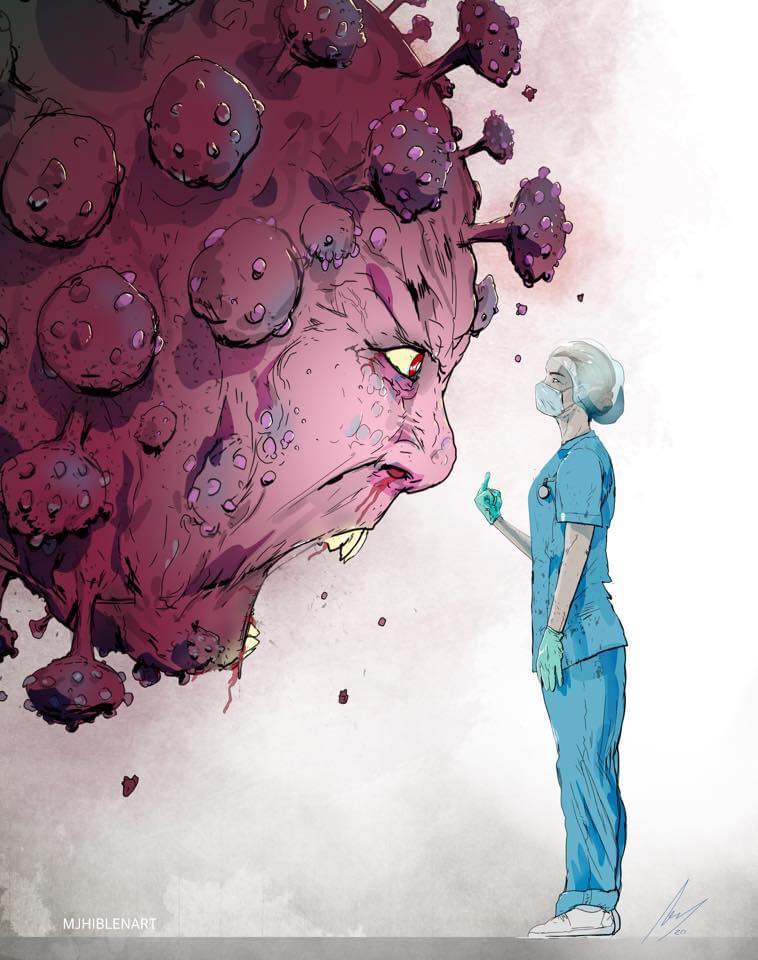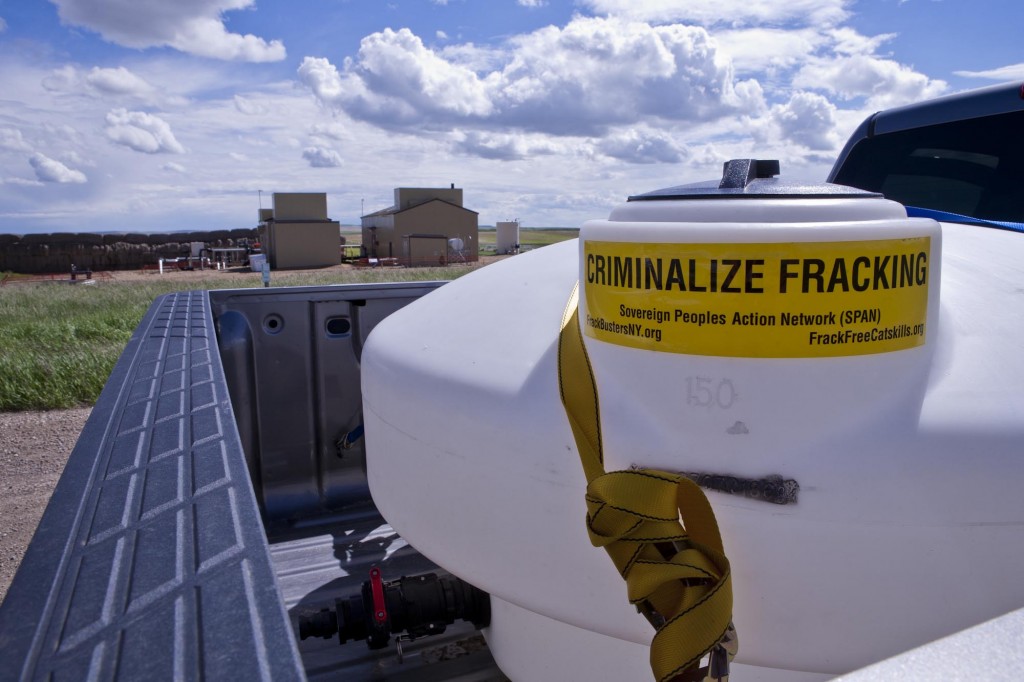The chemical blob that changed humanity by Dr. John Ross, Apr 16, 2020, Chronicle Herald

It is crazy what an invisible particle made of fat, protein, and RNA — despite lacking a nervous system, consciousness or intent — has done to humans in a few months. The SARS-2-CoV virus, the virus that causes the CoVID-19 illness, is nature’s science experiment. It is an inert blob of chemistry. It does not “stay alive on surfaces for days” when coughed or sneezed out — it just falls apart. It is not alive or dead, it just is or is not. It strictly adheres to the laws of nature, including chemistry, physics, biology and mathematics.
The virus found the perfect host to infect. It follows very predictable natural laws. Humans however, prefer beliefs and rules we make up in our heads and share, often force others to believe. Many are ignorant of the natural basic laws that affect us all. In the case of this virus, early alarms in China were suppressed by political hierarchies — human created structures. Authoritarian politics does not tolerate the unexpected or embarrassing. Other government leaders, including in the U.S., defended their fragile, highly temperamental economic belief systems, promoting calm and “business as usual” despite the virus biology and its simple arithmetic exponential spread. People in many countries around the world were supposed to be reassured by our leaders, who could negotiate a better outcome versus that being offered by nature.
But nature does not negotiate. Therefore, in order to survive, we need to change our belief systems.
Viruses and humans
The elegant simplicity of fat, protein, and RNA is like counting using five fingers on one hand. Our human complexity is that of a super-computer, with millions of complex interdependent chemical reactions, specialized organ systems, feedback loops, and a barely understood collaborative relationship with “good” bacteria on and inside our bodies. Despite the incredible sophistication and complexity, our biology must also follow the laws of nature.
Viruses and humans are driven to make more of each other. Humans make highly complex near-copies of themselves, one or a few at a time, over nine months. Viruses make more of themselves, in millions every few hours. Humans have built in on/off switches. Viruses are like cancers; they have an ON but no OFF switch.
As viruses and humans multiply and spread, they injure their hosts. When SARS-2-CoV infects humans, the immune system triggers a series of responses, in some cases leading to death. When humans and their corporations multiply, they disrupt the planet, affecting all other species.
SARS-2-CoV’s near infinity viral copies around the world are a monoculture — every one identical. It spreads among us so effectively because we too are a monoculture. Sure, we are different colours and shapes, but we share far more sameness than differences — a fact the virus appreciates, but in non-pandemic times, we should appreciate, too. What we have in common far exceeds our superficial differences.
Human belief systems and fantasies
Ultra-sophisticated humans (complex chemistry, physics, biology), in addition to amazing bodies, have amazing brains. Those brains, over millions of years, realized that we are safer and better off staying and working together, as a highly social species, than we are alone. Almost every other species found the same strategy before us — schools of fish, flocks of birds, herds of wildebeest, pods of whales, packs of wolves, etc. Sharks are an interesting exception.
The other really interesting brain development was basic storytelling — sharing experiences for the benefit of others. Those stories became more and more complex over time, and developed into whole complicated belief systems. The belief systems to this day are shared broadly — religions, politics, economies, money, social hierarchies and many others are made up in our minds. They are all “software” ideas in our heads — fantasies — that have resulted in hardware creation — countries, religious structures, economic mathematical models, currency, partisan politics, to list a few that have, over time become fixed and have been followed relatively unquestioned. They create some desperately desired order and reason in the otherwise frightening random soup of chemical and physical reactions on our planet.
Unlike most other species, we are not obsessed by the fear of predators. Other species are fully occupied by the search for food and avoiding becoming food. Humans, instead, have time to obsess over our made-up beliefs, our fantasies. However, the different beliefs shared by distinct groups creates divisions in our naturally social species. Friction at belief system interfaces result in wars, expansion and contraction of group belief systems, trade barriers, sanctions, etc. That was life as we knew it before late December 2019.
CoVID-19 and a revision of human values and priorities
Then along came the novel SARS-2-CoV. Ultra-basic inert chemical blob versus ultra-sophisticated humans. We all know what has happened in 4.5 months. It is attacking our fragile bodies AND our far more fragile belief systems. It has revealed leaders who prefer fantasies over science and the immutable laws of nature. The economy, revered as our god (fantasy, not nature) is the shared belief system at the root of almost everything. It, like the viral particle on the table top, is rapidly falling apart. It is revealing who the most important people are in our society.
It is not the billionaires — uber successful in the former economic fantasy — who, like sharks, are hiding alone in bunkers and on super yachts around the world, including one in the White House. It is not many of our political leaders, who we refer to as “right honourable,” “your majesty,” “supreme leader” and so on. ![]() After observing years of criminals put into positions of power via funding from law-violating, polluting corporations, then watching those criminal “leaders” appoint too many dirty lawyers into the judicial industry to protect and enable the endless corporate/regulator/political/judicial and legal crimes while punishing ordinary citizens seeking regulation and or justice, I no longer use those outdated inaccurate titles. They are pushed on society to make us subservient; I see no one that deserves such titles anymore, even for those that are not criminal.
After observing years of criminals put into positions of power via funding from law-violating, polluting corporations, then watching those criminal “leaders” appoint too many dirty lawyers into the judicial industry to protect and enable the endless corporate/regulator/political/judicial and legal crimes while punishing ordinary citizens seeking regulation and or justice, I no longer use those outdated inaccurate titles. They are pushed on society to make us subservient; I see no one that deserves such titles anymore, even for those that are not criminal.![]() A few have stepped way up, and many have withered.
A few have stepped way up, and many have withered.

The important people in our day-to-day society are basic frontline health-care providers and first responders, care workers in elder-homes, grocery store clerks, supply chain truckers and warehouse workers, local bankers (not the former financial wizards who concoct fantasy investment bubbles), farmers and others. The “‘viral” reaction to the rapidly spreading infection has revealed the most fragile underpinnings of our elite created economy — the huge number of casual and part-time workers, who over decades were forced to give up security, benefits and the ability to save for retirement or cushion events like this, so corporations could maintain profits. Those workers’ immediate needs are highlighting another false belief, that government is bad, the unregulated free market good.
We are now making history as the much-maligned federal, state and provincial governments support all people. While the rich can afford to fall and survive, the poor and middle class cannot.
Bailing out and propping up large corporations has not, in the past 50 years, resulted in benefits “trickling down” to workers or security when things “tank.” Instead, as of today, we are perhaps seeing an unexpected experiment in providing all people with a “basic living wage” as governments distribute money to those in need. We cannot return to the grossly unequal economic fantasy hierarchy. We need a more inclusive system. While many people are desperate to return to normal, many aspects were very unfair. This is a chance to create a better, more inclusive economy.
Human fantasies vs the ecosystem
What about the ecosystem we share with millions of plants and animals? Yes, the infections and related economic collapse are harming people.
But human-made climate change and waste production has declined almost overnight! Country delegates with different belief systems were meeting in Copenhagen, Kyoto, Paris and other places over the years. Stuck in politics and economics, humans were effectively trying to negotiate with nature — not really a negotiation because leaders reluctantly decided what was tolerable within their belief system constraints. Nature, however, follows the unyielding laws of physics, chemistry and mathematics. Despite our fantasies, nature decides on the timing of earthquakes, floods, continental fires and the reactions to the imbalance of carbon in the atmosphere. This is a magical moment for an actual and metaphorical “clearing of the air” to align our perceived needs with a sustainable ecosystem.
Conclusion
Nature does not negotiate.
Hubris: excessive pride or self-confidence. The chemical blob SARS-2-CoV has revealed our myths and over confidence, our collective human hubris. Friedrich Nietzsche said, “That which does not kill us makes us stronger.” Sadly, many humans have died and will die. Hopefully, as we rebuild our strength, we will remember that humans are just one little piece of nature’s complex puzzle.

We cannot gain dominion over her.
We share the planet with millions of other species. Humans should learn to work together far more effectively and collaborate with, and not rail against, the laws of nature.
Our history of human ingenuity, as recently displayed in the responses to CoVID-19, is immensely powerful when focused. In non-pandemic times, it is the essence of human activity and production, organized into a trading and sharing economy. The pandemic has also revealed the more important, overarching inclusive and distributive role of strong central government, that can balance fair belief systems and regulations that supports human imagination and creativity.
We should all feel empowered to advocate loudly for a very different new normal that is consistent with our place in nature. We want to return to work, but cannot go back to precarious jobs that undervalue fellow humans. We want a strong economy, but not one that is unjust and exclusive. We need to respect the laws of nature and our complex ecosystem.
A simple lesson from a simple chemical blob.
Dr. John Ross is medical director, Praxes Medical Group, and professor, department of emergency medicine, Dalhousie University. He lives in Halifax.
Refer also to:
Worldometers update April 20, 2020
Nitrogen dioxide (NO2) pollution [learn more] “may be one of the most important contributors to fatality caused by the COVID-19” a recent study [source] found after analyzing death cases from 66 administrative regions in Italy, Spain, France, and Germany. “Results show that out of the 4443 fatality cases, 3487 (78%) were in five regions located in north Italy and central Spain.
Additionally, the same five regions show the highest NO2 concentrations combined with downwards airflow which prevent an efficient dispersion of air pollution. These results indicate that the long-term exposure to this pollutant may be one of the most important contributors to fatality caused by the COVID-19 virus in these regions and maybe across the whole world.” [source]
- 83% of all fatalities (3701 cases) occurred in regions where the maximum NO2 concentration was above 100 μmol/m2
- 15.5% (691 cases) occurred in regions where the maximum NO2 concentration was between 50 and 100 μmol/m2
- 1.5% of all fatalities (51 cases) occurred in regions where the maximum NO2 concentration was below 50 μmol/m2
It shall be noted that there are other potentially decisive factors, such as a higher population density or a higher rate of international travel, that are also typical characteristics of urban areas, in addition to higher levels of pollution.
2020 04 11: Assessing nitrogen dioxide (NO2) levels as a contributing factor to coronavirus (COVID-19) fatality by Yaron Ogen, Sci Total Environ. 2020 Jul 15; 726: 138605.11.
doi: 10.1016/j.scitotenv.2020.138605
Abstract
Nitrogen dioxide (NO2) is an ambient trace-gas result of both natural and anthropogenic processes. Long-term exposure to NO2 may cause a wide spectrum of severe health problems such as hypertension, diabetes, heart and cardiovascular diseases and even death. The objective of this study is to examine the relationship between long-term exposure to NO2 and coronavirus fatality. The Sentinel-5P is used for mapping the tropospheric NO2 distribution and the NCEP/NCAR reanalysis for evaluating the atmospheric capability to disperse the pollution. The spatial analysis has been conducted on a regional scale and combined with the number of death cases taken from 66 administrative regions in Italy, Spain, France and Germany. Results show that out of the 4443 fatality cases, 3487 (78%) were in five regions located in north Italy and central Spain. Additionally, the same five regions show the highest NO2 concentrations combined with downwards airflow which prevent an efficient dispersion of air pollution.
These results indicate that the long-term exposure to this pollutant may be one of the most important contributors to fatality caused by the COVID-19 virus in these regions and maybe across the whole world.
2020 01 15: Air pollution from oil and gas production sites visible from space
Oil and gas production has doubled in some parts of the United States in the last two years, and scientists can use satellites to see impacts of that trend: a significant increase in the release of the lung-irritating air pollutant nitrogen dioxide, for example, and a more-than-doubling of the amount of gas flared into the atmosphere.
“We see the industry’s growing impact from space,” said Barbara Dix, a scientist at the Cooperative Institute for Research in Environmental Sciences (CIRES) at the University of Colorado Boulder and lead author of the new assessment published in the AGU journal Geophysical Research Letters. “We really are at the point where we can use satellite data to give feedback to companies and regulators, and see if they are successful in regulating emissions.”
Dix and a team of U.S. and Dutch researchers set out to see if a suite of satellite-based instruments could help scientists understand more about nitrogen oxides pollution (including nitrogen dioxide) coming from engines in U.S. oil and gas fields. Combustion engines produce nitrogen oxides, which is a respiratory irritant and can lead to the formation of other types of harmful air pollutants, such as ground-level ozone.
On oil and gas drilling and production sites, there may be several small and large combustion engines, drilling, compressing gas, separating liquids and gases, and moving gas and oil through pipes and storage containers, said co-author Joost de Gouw, a CIRES Fellow and chemistry professor at CU Boulder. The emissions of those engines are not controlled. “Cars have catalytic converters, big industrial stacks may have emissions reduction equipment…” de Gouw said. “Not so with these engines.”

Encana (cowardly changed name to Ovintiv) compressors polluting near Ernst’s home and the hamlet of Rosebud, Alberta, two of many in the immediate area.
Conventional “inventories” meant to account for nitrogen oxides pollution from oil and gas sites are often very uncertain, underestimating or overestimating the pollutants, de Gouw said. And there are few sustained measurements of nitrogen oxides in many of the rural areas where oil and gas development often takes place, Dix said.
So she, de Gouw and their colleagues turned to nitrogen dioxide data from the Ozone Monitoring Instrument (OMI) on board a NASA satellite and the Tropospheric Monitoring Instrument (TropOMI) on a European Space Agency satellite. They also looked at gas flaring data from an instrument on the NOAA/NASA Suomi satellite system.
Between 2007 and 2019, across much of the United States, nitrogen dioxide pollution levels dropped because of cleaner cars and power plants, the team found, confirming findings reported previously. The clean air trend in satellite data was most obvious in urban areas of California, Washington and Oregon and in the eastern half of the continental United States. “We’ve cleaned up our act a lot,” Dix said.
However, several areas stuck out with increased emissions of nitrogen dioxide: The Permian, Bakken and Eagle Ford oil and gas basins, in Texas and New Mexico, North Dakota, and Texas, respectively.
In those areas, the scientists used a type of time-series analysis to figure out where the pollutant was coming from: Drilling of new wells vs. longer-term production. They could do this kind of analysis because drilling activity swings up and down quickly in response to market forces while production changes far more slowly (once a well is drilled, it may produce oil and natural gas for years or even decades).
Before a downturn in drilling in 2015, drilling generated about 80 percent of nitrogen dioxide from oil and gas sites, the team reported. After 2015, drilling and production produced roughly equal amounts of the pollutant. Flaring is estimated to contribute up to 10 percent in both time frames.
The researchers also developed a new oil and gas emissions inventory, using data on fuel use by the industry, the location of drilling rigs, and well-level production data. The inventory confirmed the satellite trends, said co-author Brian McDonald, a CIRES scientist working in NOAA’s Chemical Sciences Division, “It is a promising development that what we observe from space can be explained by expected trends in emissions from the oil and gas industry.”
“Scientifically, this is especially important: we can do source attribution by satellite,” de Gouw said. “We need to know the important sources to address these emissions in the most cost-efficient manner.”
